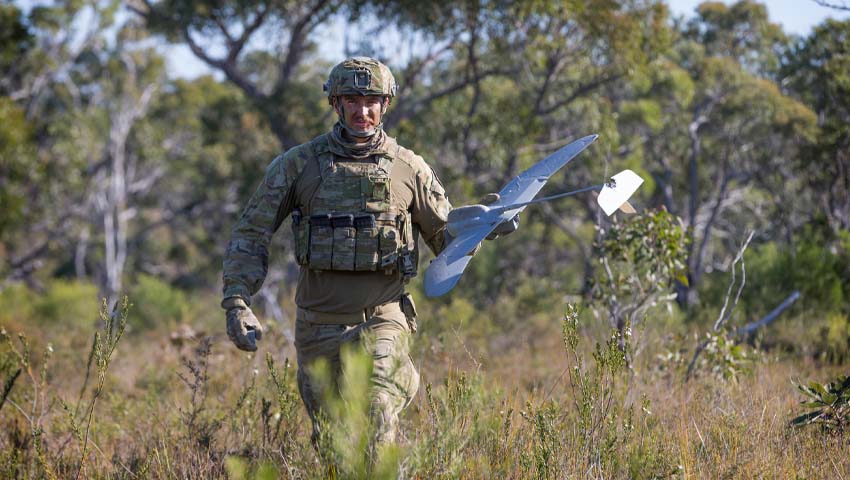The Army’s fleet of Wasp AE unmanned aerial systems is playing a pivotal role in support of the Australian Defence Force’s participation in Operation Bushfire Assist.
Like throwing a paper plane, 20 Regiment Royal Australian Artillery Bombardier Jarrod Logan launched a Wasp AE unmanned aerial system (UAS) from a paddock 20 kilometres south of Canberra to survey blazing scrub in the Orroral Valley on 6 February.
20 Regiment patrolled the smoky skies from 5am-9am each morning while fire threatened nearby homes. By 8am, Captain Shaun Montgomery was relaying a situation report to the ACT Emergency Services Agency (ESA) planning team.
CAPT Montgomery said, "MRH-90s, MH-60Rs and civilian aircraft were flying in the area all day from 9am and most of the night, but there was up to a seven-hour gap overnight when the fire wasn’t being monitored. The first details of where the fire had spread overnight came from reports back from crews on the ground."
BDR Logan said information from UAS patrols helped the ESA decide how to battle the fire.
"The Wasp AE is able to capture electro optical and infra-red imagery of the scene below. We’ve been able to provide some really good product to help the ESA detect where the fire front is and decide how to best delegate their resources," BDR Logan explained.
Operation Bushfire Assist is the Australian Defence Force’s response in support of the ongoing bushfire crisis across NSW, Victoria and South Australia.
ADF personnel have been working with state and territory authorities since September 2019 in response to Australia’s bushfire crisis. This support will continue for as long as needed.



